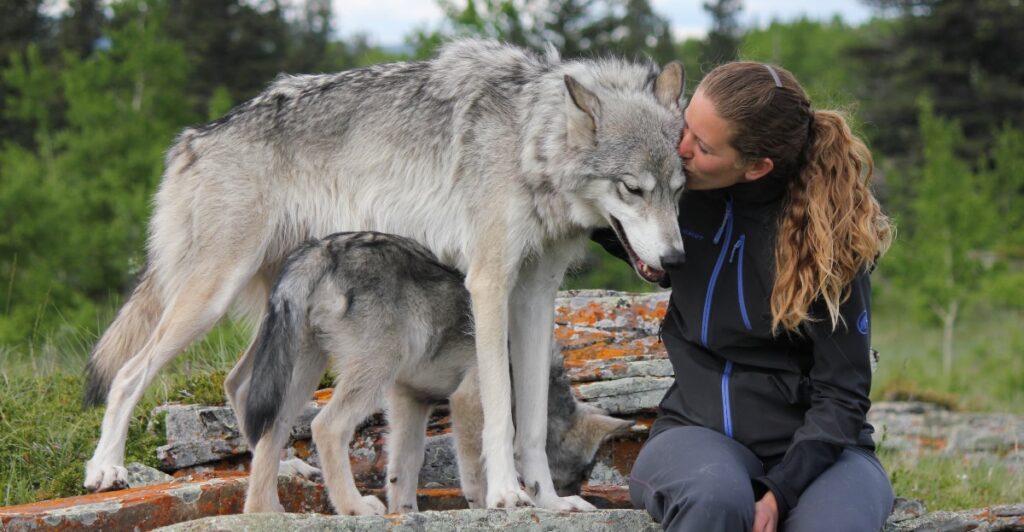
In the world of canine companions, some breeds are noteworthy for their wolf-like appearance and behavior. These animals, with their wolf-like characteristics and natures, walk the tightrope between tame pet and feral killer.
Their beauty is more than skin deep; many of them carry with them physical and behavioral traits that remind us of their wolf ancestors. From the cold steppes of Siberia to the woods of Europe, these dogs introduce us to wildness in our domesticity.
Let’s examine nine such breeds, investigating their origins, what makes them special, and why they present special challenges for possible owners.
1. Czechoslovakian Wolfdog: Cold War Dog

The Czechoslovakian Wolfdog, also called Československý vl ák, was bred in 1955 as a government project in Czechoslovakia. By crossbreeding German Shepherds with Carpathian grey wolves, breeders aimed to combine the trainability of domestic dogs with the strength and endurance of wolves.
Originally developed for border patrol during the Cold War, these dogs later excelled in search and rescue, tracking, and agility sports. They are dramatic in appearance, with a thick coat, amber eyes, and a strong, agile build.
Yet, they are high-energy and free spirits in nature, needing experienced handlers to better address their needs. Despite this, they are known as loyal, obedient, intelligent, and independent dogs best suited to active pet parents.
2. Tamaskan: The Finnish Phantom

In Finland, the Tamaskan was bred to resemble a wolf but with a gentle and friendly temperament. By crossbreeding Siberian Huskies, Alaskan Malamutes, and German Shepherds, breeders developed this wolf-like dog breed without using wolf DNA at all.
Tamaskans are smart, loyal, and versatile, being proficient in many dog sporting activities. With their double coat of thick fur and dramatic markings, they are handsome in appearance, but they need regular exercise and mental stimulation to prevent boredom.
Although not officially accepted by big kennel clubs, the Tamaskan has gained popularity because of its unique appearance and affectionate, outgoing, and friendly nature.
3. Northern Inuit Dog: The TV Star
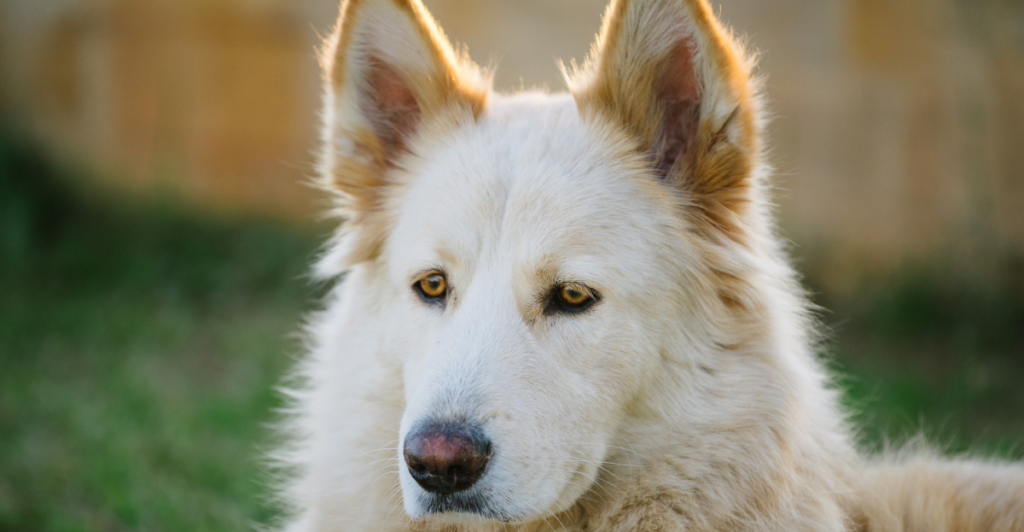
The Northern Inuit Dog became popular as “dire wolves” from the TV series “Game of Thrones.” Although they appear feral, they are actually a completely domesticated breed, created from Siberian Huskies, Alaskan Malamutes, and German Shepherds.
Developed in the United Kingdom, this breed was made to resemble wolves but is friendly and trainable. As a result, it is extremely intelligent and sociable and strongly bonds with its family.
Although this makes them wonderful companions, they are highly energetic and crave company, making them best suited for active families. Their popularity, as a result of the HBO series, has increased, but potential pet parents must be conscious of the responsibilities involved in caring for such a lively and intelligent breed.
4. Utonagan: Spirit of the Wolf
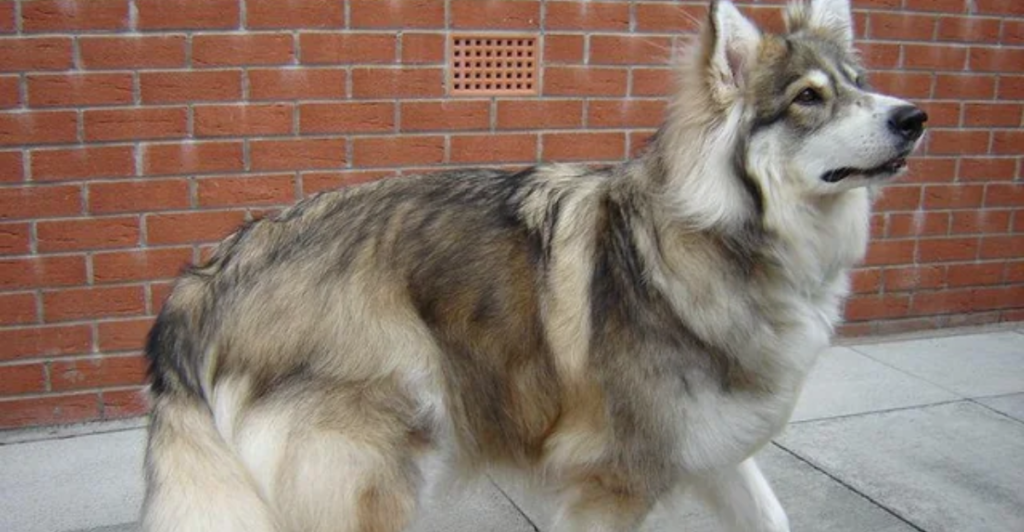
The Utonagan, or “Spirit of the Wolf” in Chinook, is a British breed created to appear like the wolf without the wild attitude. By crossing Siberian Huskies, Alaskan Malamutes, and German Shepherds, breeders created a dog that looked like a wolf but behaved as a domesticated companion.
Utonagans are affectionate, gentle creatures with strong hunting instincts and make excellent family pets. They are intelligent and obedient, but their heavy coats require consistent grooming, and their high-energy levels require plenty of exercise in order to be healthy and happy.
Though not bred by premier kennel clubs, the Utonagan’s unique appearance and free-spirited personality have made it a popular breed among dog enthusiasts.
5. Alaskan Malamute: The Arctic Powerhouse
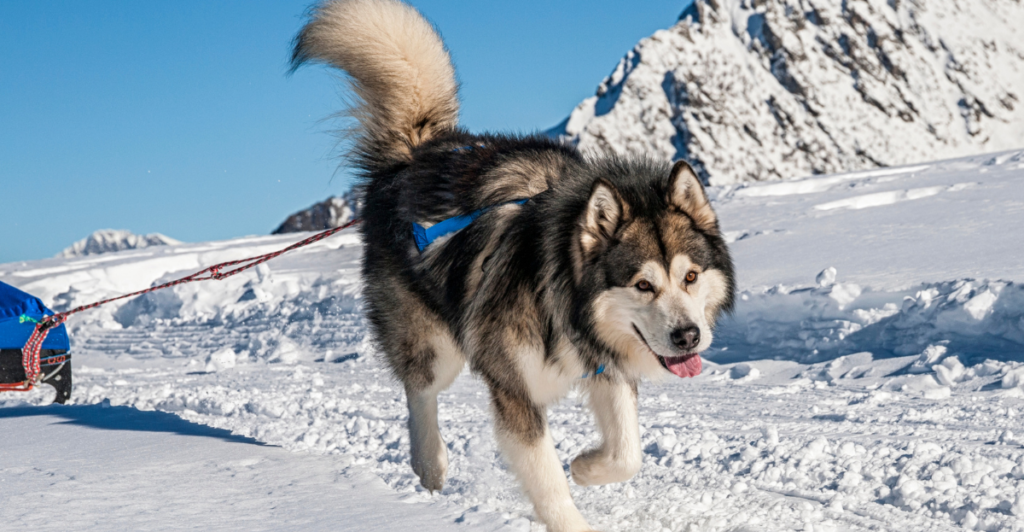
One of the oldest Arctic sled dogs, the Alaskan Malamute is powerfully built and has a thick, weather-resistant coat. Wolf-like in appearance, this is matched by strength and endurance, traits well-honed over centuries of dragging heavy sleds through harsh weather conditions.
Malamutes are loyal and friendly but stubborn and require consistent training. Malamutes are high in energy and need regular exercise. Additionally, their heavy coats need frequent grooming. Their gentle, protective, and affectionate nature allows them to thrive in family environments.
Historically, their hunting instincts have seen them excel in search and rescue work, adapting to work in colder climates. Now, they continue to be popular among those who appreciate their strength and companionship.
6. Siberian Husky: The Chatty Traveler
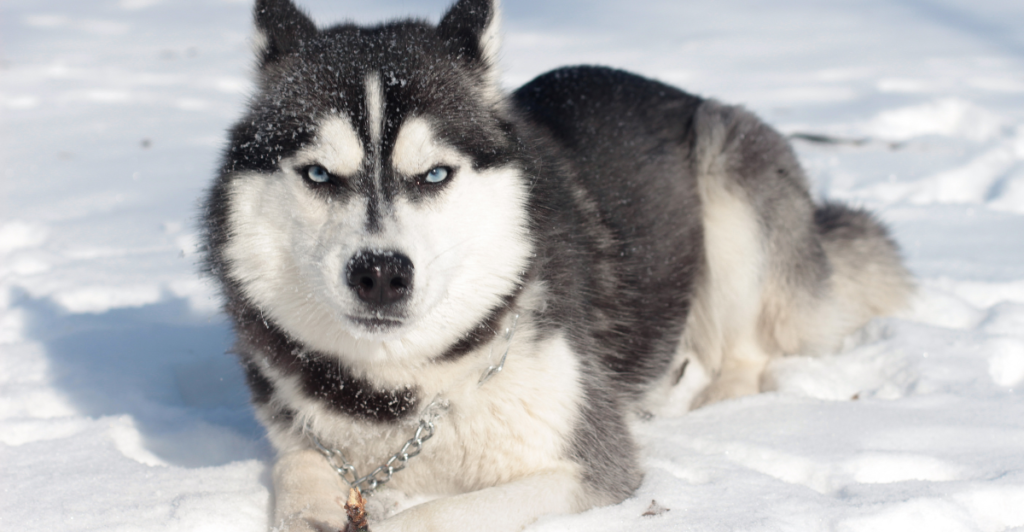
Siberian Huskies are known for their piercing blue eyes, erect ears, and thick double coat, which makes them resemble wolves. The Chukchi tribe in Siberia initially bred them as sled animals and companions.
Huskies are friendly, intelligent, and chatty dogs. Their loving and sociable natures allow them to interact and get along with people and other canines rather easily. However, their strong, independent characters and high energy levels can be challenging for inexperienced pet parents.
Due to their energetic nature, Huskies require a great deal of exercise and mental stimulation to remain happy and prevent destructive behavior. Their strength and flexibility have made them increasingly popular in many dog sports and admired family pets.
7. Shikoku: Japan’s Wolf-Like Hunter
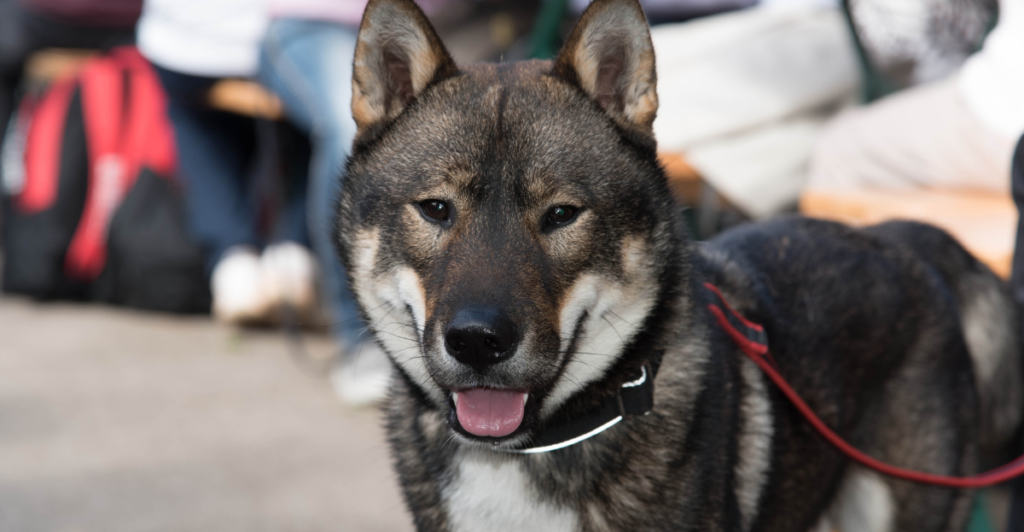
The Shikoku, a native Japanese breed, is known for its agility, intellect, and wolf-like appearance enhanced by its thick coats and erect ears. Originally developed to hunt in hill country, Shikokus are alert and spirited, with a fine prey drive.
Shikokus bond strongly with their families but can be standoffish with strangers. Due to their high energy, they need daily exercise and must be taught to socialize early in order to thrive, making them best suited for assertive and active pet parents.
Their loyalty and hunting prowess have made them a cherished breed in Japan, but abroad in their own country, they remain relatively rare.
8. Saarloos Wolfdog: The Dutch Experiment
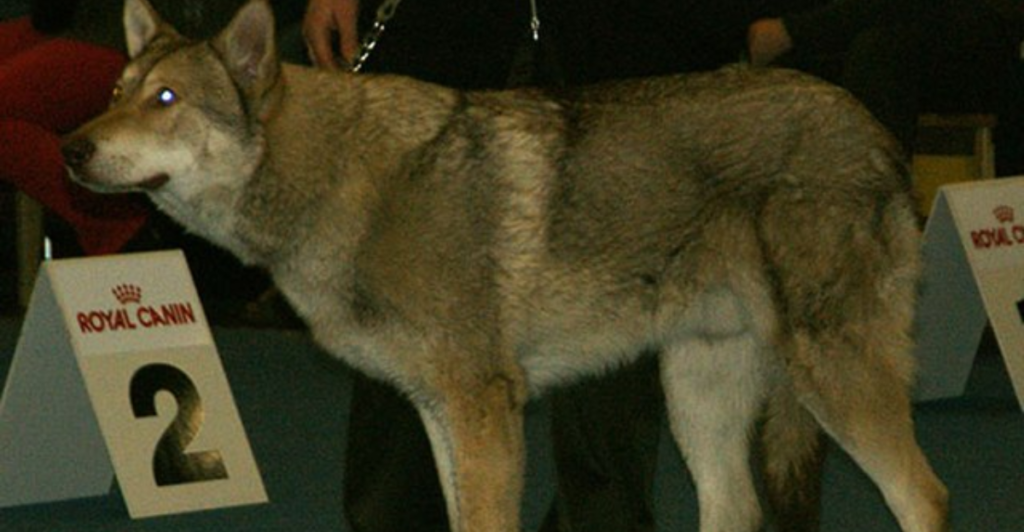
The Saarloos Wolfdog is the bold offspring of an experiment by Leendert Saarloos in the Netherlands in the 1930s, when he interbred a German Shepherd with a Eurasian gray wolf. He had envisioned breeding a working dog with the energy and instincts of a wolf, but what he got was far more advanced.
The Saarloos Wolfdog possesses the intelligence and loyalty of a shepherd, but also the independence, wariness, and reserve of its wild wolf ancestors. Though gracefully beautiful—a lean, wolf-like physique and piercing eyes—it is not suited for first-time pet parents.
Saarloos dogs are wary of strangers, need plenty of socialization, and will resist obedience training. But their strange history, intense pack allegiance, and stunning appearance have made them popular among devoted dog enthusiasts and wolfdog enthusiasts alike.
9. Finnish Lapphund: The Reindeer Herder
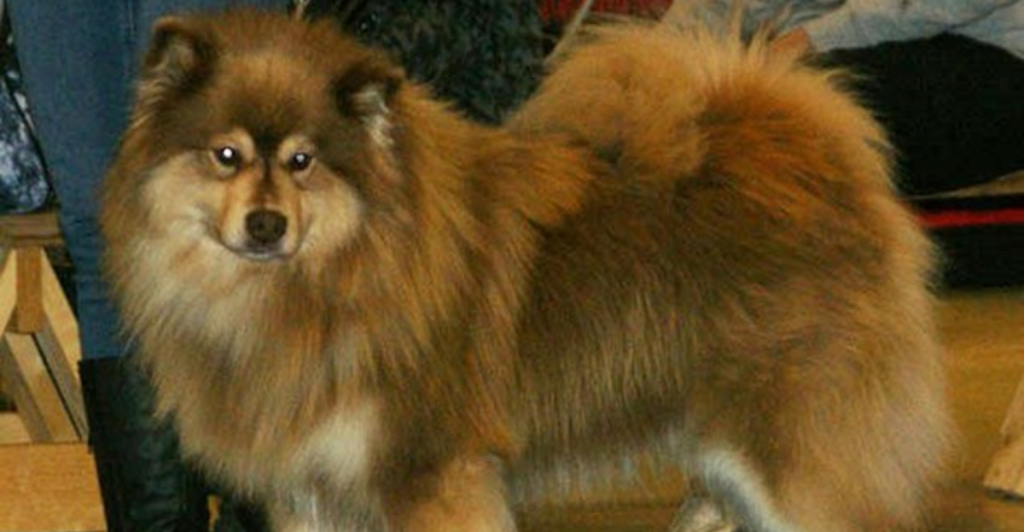
Far too often excluded from the conversation about wolf-like dogs, the Finnish Lapphund astonishes many with its ancient roots and feral appearance. This herding dog was developed by Lapland’s native Sámi to drive reindeer.
Though smaller and fluffier than the standard “wolf lookalike” ideal, the Finnish Lapphund shares some of the same features: a thick double coat, intelligent almond-shaped eyes, and a strong survival instinct. They are expressive and alert by nature, with an uncanny ability to read human emotion.
What’s fascinating about them is the cognitive dissonance: a dog with an ancient history and rugged demeanor, but one that is also cuddly, friendly, and eager to please. In a sense, they’re proof that even the roughest, wolfiest breed can be a devoted family pet.
Explore more of our trending stories and hit Follow to keep them coming to your feed!

Don’t miss out on more stories like this! Hit the Follow button at the top of this article to stay updated with the latest news. Share your thoughts in the comments—we’d love to hear from you!







